
 Located where the Canal du Midi meets the Mediterranean, Sète occupies part of a narrow spit of land that separates the Étang de Thau, a natural saltwater lake, from the Mediterranean sea. This is a working port, with a large percentage of the inhabitants involved in the fishing industry. Although Sète doesn't try to be a top tourist destination, this very fact makes it a refreshing place to visit and wonderful opportunity to surround yourself with the unspoiled local culture.
Located where the Canal du Midi meets the Mediterranean, Sète occupies part of a narrow spit of land that separates the Étang de Thau, a natural saltwater lake, from the Mediterranean sea. This is a working port, with a large percentage of the inhabitants involved in the fishing industry. Although Sète doesn't try to be a top tourist destination, this very fact makes it a refreshing place to visit and wonderful opportunity to surround yourself with the unspoiled local culture.Although archeologists have found evidence that humans have occupied the area around Sète since the Bronze Age or earlier, the town was not founded until the mid-17th Century. King Louis XIV issued the order to build a port and provide an outlet to the sea for the Canal du Midi, and the town grew around this project. Originally known as Cette (or Seta in Occitan), the spelling was changed to Sète in 1928.
Sète is built on and around an extinct volcano, Mont St Clair, at the end point of the Canal du Rhône à Sète, and the eastern end of the Canal du Midi. A network of smaller canals crisis-cross the town, linking the Étang de Thau and the sea, the reason some call Sète 'Venice of the Languedoc'.
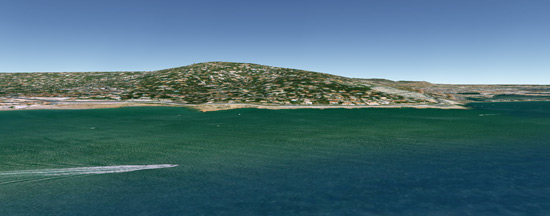
The sport of water jousting (les joutes languedociennes) is an important element of local culture. Tournaments are held from April to September on the Canal Royal in the center of town, and are the highlight of the summer festivals. The competition involves two wooden row boats, one blue and one red, manned by a team of rowers. The jousters, wielding wooden lances and shields, are positioned on a raised platform (la tintaine) at the stern of the boats. The boats are rowed toward each other, and as one would expect, the jousters attempt to dislodge each other from their platform, sending the loser for a swim in the canal. All the while a band plays from onshore and crowds cheer the jousters on. Every year at the end of August the Grand Prix de la Saint-Louis à Sète, the unofficial world championship of water jousting, is held in conjunction with the festival of Saint Louis. Competitors must be invited by the city to participate. Sétois jousting king Aurelien Evangelisti, 'The Centurion', has won the title seven times, but was defeated in 2014 by Benjamin Arnau. A water jousting school (École de joutes de la Marine) and a museum dedicated to the sport are located in Sète.
Sète hosts several colorful festivals each year. In late June or early July, on the feast day of St. Peter, patron saint of fisherman, the town residents come together to honor those who have been lost at sea, and ask for protection for those who make their livelihood on the water. A parade carries a statue of St. Peter through the streets, then aboard a boat which is joined by a procession of fishing trawlers festooned with flags and flowers. After the procession there is a water jousting tournament. Mix this in with the delicious local seafood, and an ample supply of rosé to wash it down, and it is impossible not to have a fabulous time. A festival held annually on August 25 celebrates the patron of Sète, Saint Louis, with more water jousting, feasting, music, and fireworks.
With over 90 varieties of fish harvested from the Mediterranean, and cultivated mussels and oysters from the Étang de Thau, it is no wonder that Sète has many excellent restaurants serving up the fruits of the sea.There are several local and regional specialties featured, including la tielle, a dish brought from the Gulf of Gaèta in Italy by the many immigrants that arrived in Sète from this area in the 18th and 19th centuries. It is a seafood mixture - usually either octopus or squid - combined with tomato sauce and spices, then encased in a pastry crust and baked. Other specialties include stuffed squid a la Sétoise served in a wine, tomato and garlic sauce, and a local variation of bourride which, unlike other regional recipes for this dish, is not finished with garlic-laden aioli.

Another wonderful attraction here are the 12 kilometers of sea shore with beautiful sandy beaches. Free car parks and turn-offs from National Route 112 provide convenient access to the beach, perfect for a day of sunbathing and picnicking by the seaside.

Learn more about barge cruises on Canal du Midi that include a visit to Sète at Boutique Hotel Barges.
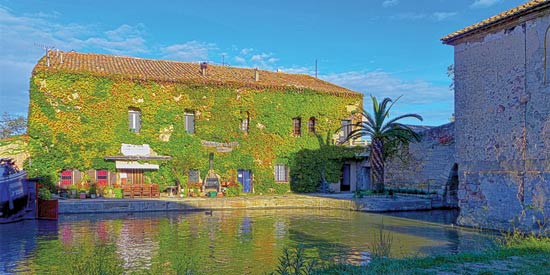
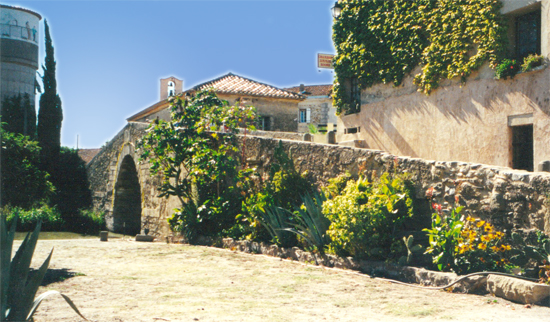

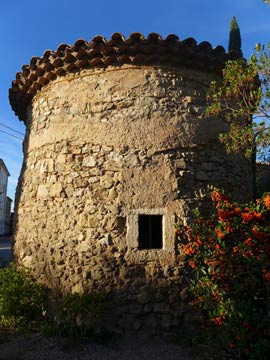





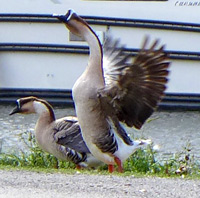 This restaurant is a favorite of foodies who come here to enjoy the best locally sourced organic meats and produce the area has to offer. All meals are freshly prepared by Le Comptoir Nature's four local French women chefs, using ingredients procured daily: daurade picked up at the Narbonne fish market, magret de canard, lamb, and pork from farmers in the nearby Pyrenees, and wonderful fresh seasonal vegetables. There is even a vegetarian plate on the menu, a rarity in these parts. The artisanal ice cream is made from ewe’s milk - delicious! Le Comptoir Nature offers a selection of fine organic wines. Enjoy a bottle to accompany your meal, or sip a glass sitting at one of their small tables alongside the canal, watching the barge traffic and being entertained by the geese and ducks all around. Jazz ensembles or a funky brass band perform on Wednesday and Friday evenings, making for great fun. Prices are very affordable with 3- and 4-course meals ranging from €17.50 to €32.
This restaurant is a favorite of foodies who come here to enjoy the best locally sourced organic meats and produce the area has to offer. All meals are freshly prepared by Le Comptoir Nature's four local French women chefs, using ingredients procured daily: daurade picked up at the Narbonne fish market, magret de canard, lamb, and pork from farmers in the nearby Pyrenees, and wonderful fresh seasonal vegetables. There is even a vegetarian plate on the menu, a rarity in these parts. The artisanal ice cream is made from ewe’s milk - delicious! Le Comptoir Nature offers a selection of fine organic wines. Enjoy a bottle to accompany your meal, or sip a glass sitting at one of their small tables alongside the canal, watching the barge traffic and being entertained by the geese and ducks all around. Jazz ensembles or a funky brass band perform on Wednesday and Friday evenings, making for great fun. Prices are very affordable with 3- and 4-course meals ranging from €17.50 to €32.
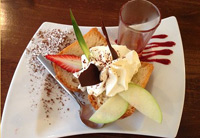 L’Auberge is the 'new' restaurant in Le Somail, having opened with its current owners two years ago. Locals often come here for birthday celebrations or other special occasions. It offers an elegant dining room and an outdoor canal-side terrace. The chef here draws from Languedoc's proximity to Spain, borrowing several dishes from the Spanish, such as paella and gaspacho. There are plenty of typically French favorites, too: a delicious melted goat cheese salad, foie gras, and a homemade cassoulet among them. This is the only restaurant in Le Somail that offers this succulent and rich regional dish made with white beans and duck confit. There is great debate as to exactly where cassoulet originated. Carcassonne, Castelnaudary and Toulouse all claim ownership, and there is a confrerie of cassoulet chefs still arguing over the recipe and it's origin. One thing that is agreed on is that the beans have to be AOC from the Aude region. Prices range from €23 to €25 for a three course menu, or order a la carte from their large selection.
L’Auberge is the 'new' restaurant in Le Somail, having opened with its current owners two years ago. Locals often come here for birthday celebrations or other special occasions. It offers an elegant dining room and an outdoor canal-side terrace. The chef here draws from Languedoc's proximity to Spain, borrowing several dishes from the Spanish, such as paella and gaspacho. There are plenty of typically French favorites, too: a delicious melted goat cheese salad, foie gras, and a homemade cassoulet among them. This is the only restaurant in Le Somail that offers this succulent and rich regional dish made with white beans and duck confit. There is great debate as to exactly where cassoulet originated. Carcassonne, Castelnaudary and Toulouse all claim ownership, and there is a confrerie of cassoulet chefs still arguing over the recipe and it's origin. One thing that is agreed on is that the beans have to be AOC from the Aude region. Prices range from €23 to €25 for a three course menu, or order a la carte from their large selection.

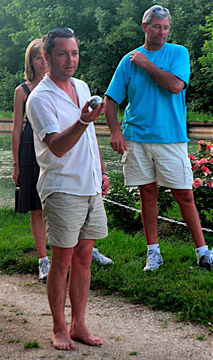 All that's needed is an open space, a friend or two, a pétanque game set, and the ability to aim and throw a ball. The game set includes a small wooden ball called a jack or cochonnet ('piglet'), six or eight larger hollow metal balls (boules), and a measure.
All that's needed is an open space, a friend or two, a pétanque game set, and the ability to aim and throw a ball. The game set includes a small wooden ball called a jack or cochonnet ('piglet'), six or eight larger hollow metal balls (boules), and a measure.



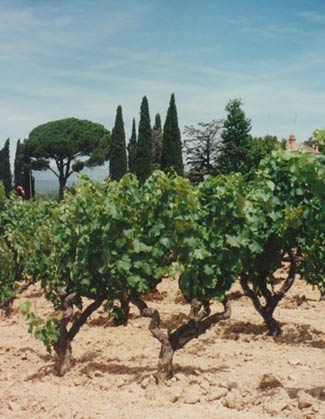 Contributed by Dawn Shepherd from Boutique Hotel Barges' US Office
Contributed by Dawn Shepherd from Boutique Hotel Barges' US Office  Although I knew the definition of terroir as it applies to wine, I first truly understood it after spending a few weeks in the Languedoc aboard the beautiful barge
Although I knew the definition of terroir as it applies to wine, I first truly understood it after spending a few weeks in the Languedoc aboard the beautiful barge